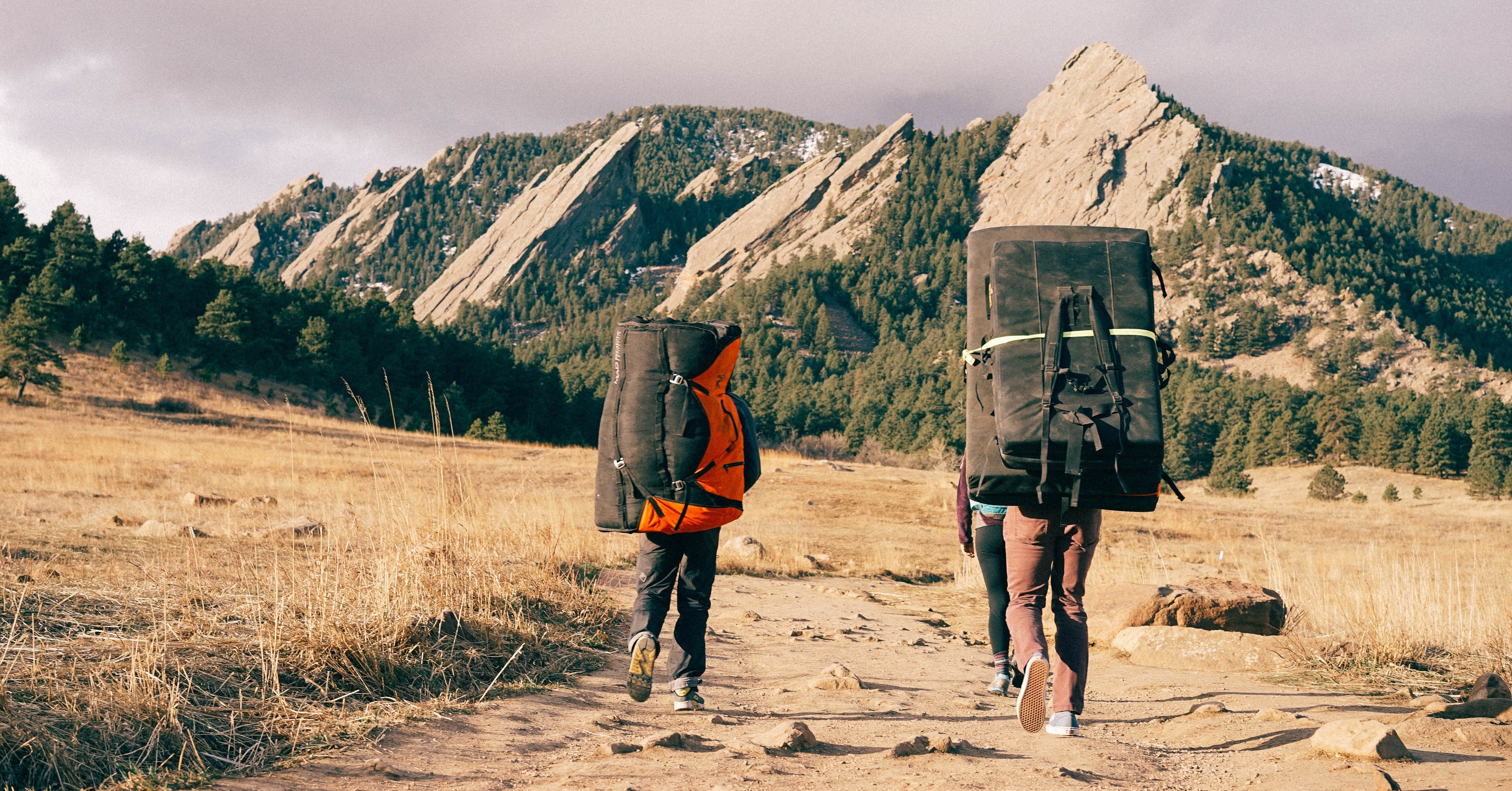Beginner’s Guide to Outdoor Rock Climbing: Essential Gear
With the weather warming up, outdoor climbing season is here. Stepping into this new world can feel overwhelming—and expensive—especially when you see other climbers decked out with racks of gear and specialized clothing and shoes. But not all climbing gear is essential when you're just getting started. This guide will break down what you truly need for each type of outdoor climbing and what can wait until later.

What You Can Skip (For Now)
Let's start with what you don't need right away. When starting out, it’s easy to get caught up in buying every piece of expensive gear just to be safe. Here’s what you can pass up on while you get the hang of crushing your first routes:
-
Expensive Aggressive Shoes – Comfort matters more than aggressive downturns when you’re learning, and you really won't feel the benefit of aggressive shoes until you reach more difficult grades.
-
A Full Rack of Trad Gear – If you're eager to explore outdoor climbing but have never tried it yet, start with bouldering or sport climbing before investing in things like cams and nuts.
-
Belay Glasses – Helpful, but not necessary for new climbers.

Must-Have Gear for All Climbers
Regardless of whether you're climbing inside or outside, these pieces of gear are fundamental:
-
Climbing Shoes – Your most important piece of gear. Climbing shoes provide the grip and precision you need to move efficiently on the wall. Beginners should opt for a comfortable, neutral shoe before progressing to more aggressive styles. Movement staff can help you find the perfect shoe for you.
-
Chalk and Chalk Bag – Chalk helps keep your hands dry and improves grip. A chalk bag with a secure closure will keep it handy during climbs.
-
Climbing Harness (Ropes Only) – If you're rope climbing, a harness is non-negotiable. Look for one with adjustable leg loops and a comfortable fit.
- Appropriate Apparel - Everyone has their own clothing preferences when they climb, but it's certainly easier to climb in stretchy athletic clothes than tight, stiff dresswear. Being comfortable is most important though, so follow this one as you'd please.

Outdoor Bouldering: Basic Starting Equipment
Outdoor bouldering is a great first step into sending real rock. It certainly requires the least prep of all outdoor climbing methods, you'll just want to have your hands on all of the must-have gear from the last section, as well as:
- Crash Pad – A necessity for preventing injury. Gyms have padded floors, but the ground does not! If possible, bring multiple crash pads and learn proper pad placement. These can often be rented.
- First Aid Kit - Minor cuts and scrapes can happen when you're taking tumbles, so it’s smart to carry bandages, antiseptic wipes, and athletic tape. Hopefully you won't need it, but it's good to have!

Sport Climbing Gear: Essentials for Outdoor Rope Climbing
If you're moving beyond the gym's rope walls and into outdoor sport climbing, you'll need some additional gear. If you're heading to the crag with a group, it's not necessary that everyone each own all of these, but it's important to communicate that everything on this list is accounted for by at least one person.
-
Helmet – Outdoor climbing introduces rockfall hazards, making a helmet critical for safety.
-
Climbing Rope – A dynamic rope designed for lead climbing is necessary for sport and trad climbing. Standard lengths range from 60m to 70m.
-
Belay Device – A must for any climber planning to belay a partner. The Petzl GriGri and ATC are two popular choices, each with their own advantages. Most beginners will find the GriGri more comfortable though, as it has built-in safety locking features.
-
Locking Carabiner – Used with your belay device, a locking carabiner ensures secure belays and rappels.
-
Quickdraws – Used to clip your rope into bolts on the wall, quickdraws are essential for sport climbing.
-
Personal Anchor System (PAS) – A tethering system to secure yourself at an anchor when cleaning a route.

Trad Climbing Gear: Advanced Equipment for Experienced Climbers
Trad climbing requires specialized protection since there are no pre-placed bolts, you make your own anchor points! Once you're ready to tackle clean cliff faces, you can finally start working on that decked out harness. Essential gear includes everything from the Sport Climbing list as well as:
-
Cams and Nuts – Placed into cracks for protection, these are the backbone of trad climbing safety.
-
Nut Tool – Used to remove stuck gear from a route.
-
Slings and Additional Carabiners – Useful for extending placements and creating anchors.

Get the Right Training for Your Outdoor Journey
Your gear needs will evolve as you progress. If you're looking to transition to outdoor climbing, consider taking a class to build the skills needed for safe outdoor climbing. Many of our gyms offer Outdoor Development classes, including Sport Climbing and Crack Climbing classes, to help you gain confidence and proficiency inside before heading outside. While you're there, ask about our Gear Packages to save on some of those essentials!
By focusing on the essentials and gradually expanding your gear collection, you’ll set yourself up for success—without breaking the bank!


